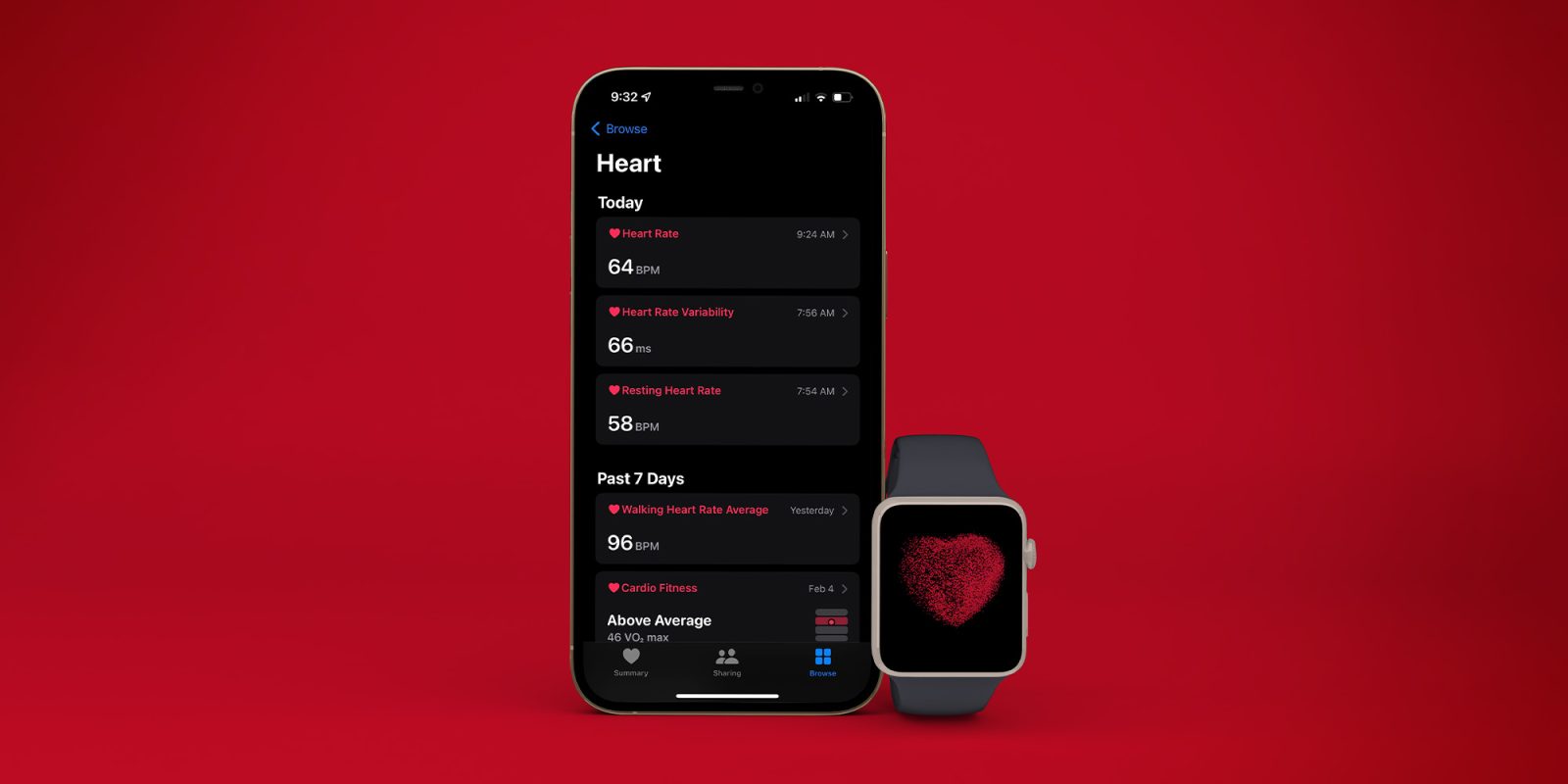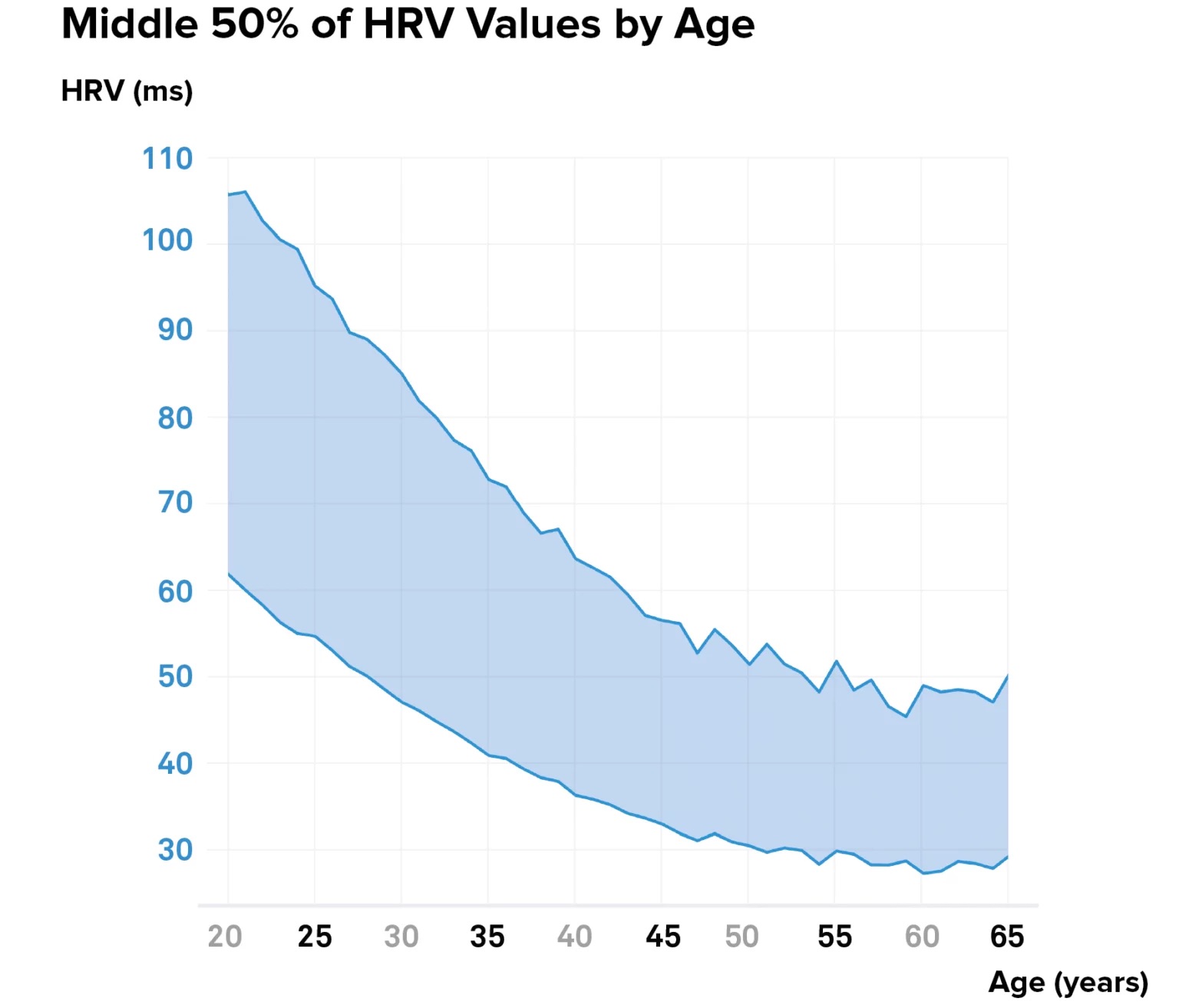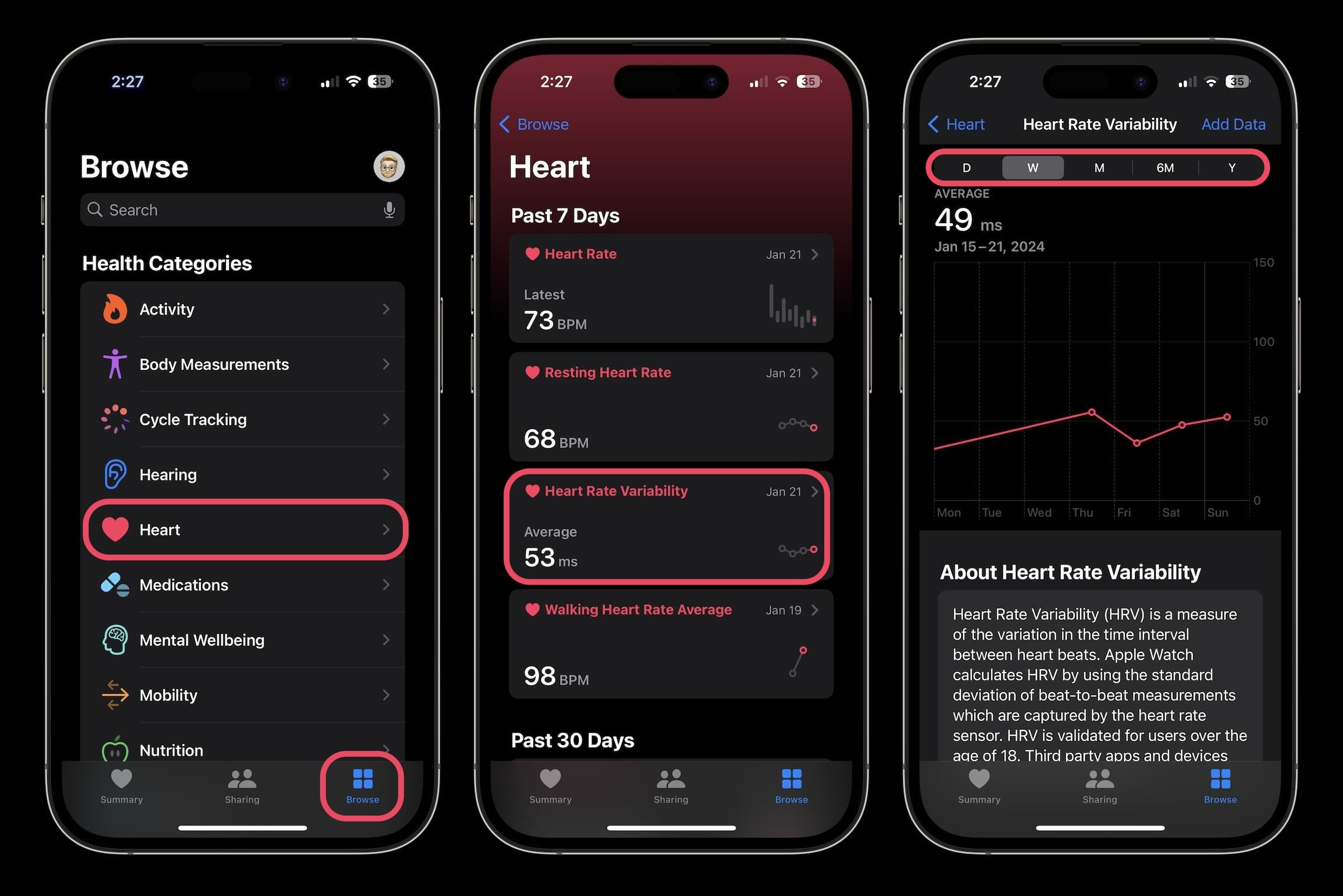
HRV is a valuable health metric that’s measured by Apple Watch, however, there’s no native integration in watchOS or iOS to better understand and make use of the data – leaving that to third-party apps. Below we’ll cover what HRV is, why it’s important, and how to record and use HRV with Apple Watch and iPhone.
Table of contents
What is HRV?
HRV stands for heart rate variability and is the measurement of how the interval of time between heartbeats changes. You don’t notice these tiny variances but devices like Apple Watch capture HRV, which is measured in milliseconds.
Some medical professionals contend measuring HRV through the skin with smartwatches isn’t as accurate as dedicated medical equipment. But there have been studies that show Apple Watch is as reliable as products like the Polar’s heart rate monitors for measuring HRV.
In late 2022, we saw the most recent study published that shows Apple Watch is precise at tracking HRV.
Why is HRV important?
While it may sound like a bad thing at first, a higher HRV is actually indicative of being healthier, happier, less stressed, and can mean you’re recovered and are ready to exercise.
Many health and fitness professionals consider HRV as one of the best metrics to know when your body needs rest or is ready to perform as well as giving insight into the condition of your autonomic nervous system.
Along with HRV, Cardio Fitness – based on VO2 max – is a valuable metric to be aware of that can be indicative and predictive of overall health.
Here’s how the Cleveland Clinic describes HRV:
Your heart’s variability reflects how adaptable your body can be. If your heart rate is highly variable, this is usually evidence that your body can adapt to many kinds of changes. People with high heart rate variability are usually less stressed and happier.
On the flip side, a low HRV (at rest) can indicate that your body is less adaptive/resilient and may be a sign of health problems or potential health issues in the future.
What’s a good HRV number?
HRV is a very individualized and constantly changing metric. It’s also dependent on a variety of factors including physical and mental health/stress, diet, nutrition, alcohol use, sleep habits, age, gender, genetics, exercise frequency/intensity, and more.
HRV can also change a lot within a day, so don’t get hung up on tracking it hour to hour. With that in mind, it’s important to not use HRV by comparing it to others but to just look at your own HRV trends over time. If you have questions about your HRV numbers, check in with your doctor.
But if you’re curious about general HRV numbers, Whoop has published the middle 50% HRV values of its users by age:

How to use HRV with Apple Watch and iPhone
How to find your HRV Apple Watch data
For Apple Watch users 18 and older, HRV is automatically recorded with Apple Watch (in most countries). However, you need to head to the Health app on iPhone to look at the data.
- Open the Health app on iPhone
- Tap the Browse tab in the bottom right corner
- Now choose Heart > Heart Rate Variability
- At the top, you can change the HRV data view by day, week, month, half-year, and year

How to force record HRV with Apple Watch
You can get more accurate and potentially more useful data if you manually do an HRV reading with Apple Watch while at rest, and at the same time each day.
- In addition to the automatic readings, you can force Apple Watch to record your HRV by opening the Mindfulness app and choosing Breathe
- Shortly after, you’ll see the new HRV data show up in the Health app on iPhone
Get more value from your HRV data
The sticking point is that Apple Watch and the iOS Health app don’t give any recommendations or insights into your HRV data like Whoop or Oura.
It’s useful to know an upward-trending HRV is a good indication of overall health but what about more actionable insights?
I’ve used the app Training Today and have been impressed with its recommendations. After allowing it to read your HRV data from the Health app, the app compares your current HRV to your baseline to make a recommendation like taking time for recovery, “keep steady but listen to your body,” or “ready for peak performance.”
Training Today calls it a readiness to train (RTT) score and works on an easy-to-use, color-coded 0-10 scale. I’ve found the recommendations to be a really helpful nudge to listen to what my body is telling me.

Training Today is a free download from the App Store with in-app purchases to unlock all of the app’s features.
More great HRV-based apps to check out include:
And if you happen to have a compatible Bluetooth or ANT heart rate monitor from Polar, Suunto, or others, Elite HRV is another iOS app that gives a more detailed and actionable experience.
How to improve HRV
Smart health tracker Whoop has a great article on 10 ways to improve your HRV. You probably won’t find many surprises but the list is a good reminder of areas to revisit/prioritize:
- Exercise
- Diet and nutrition
- Consistent sleep
- Stay hydrated
- Avoid alcohol
- Focused breathing
- Meditation
- Cold therapy
- Gratitude journaling
Read more tutorials from 9to5Mac:
- Here’s how and why you should set up Cardio Fitness on Apple Watch and iPhone
- Apple Watch: How to see your detailed heart rate history
- How to see steps with Apple Watch including custom watch face complications
- Apple Watch: How to see calories burned – active, passive, and total
FTC: We use income earning auto affiliate links. More.




Comments